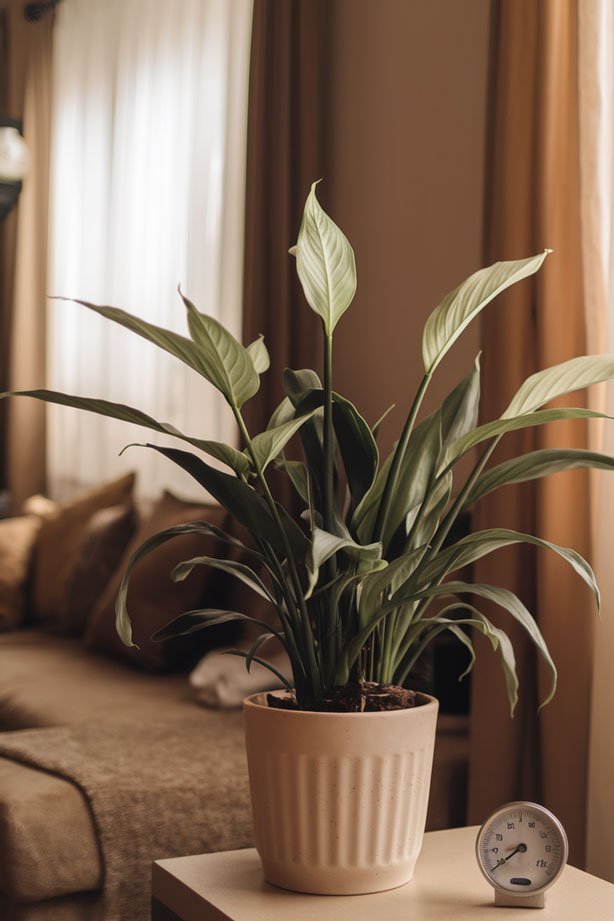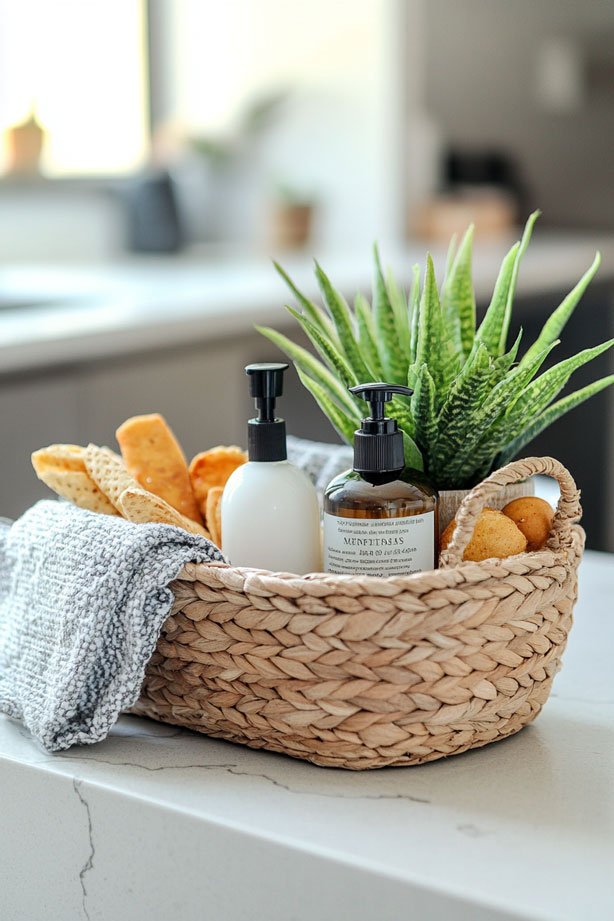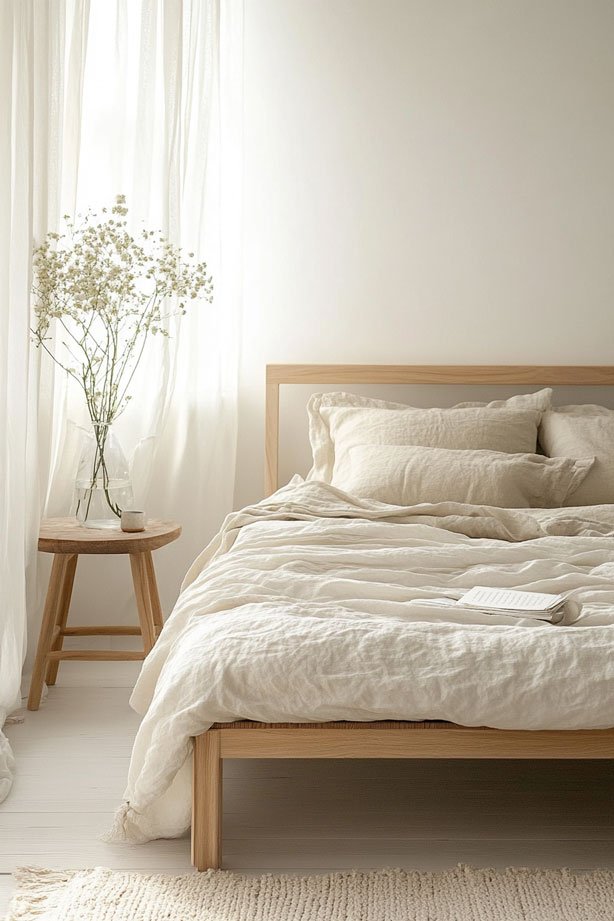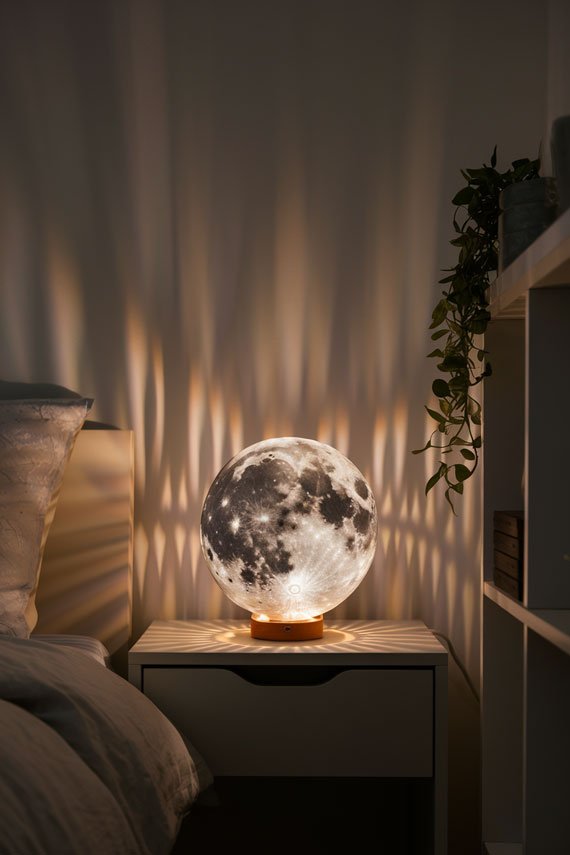
Why is a Peace Lily Perfect for Apartments?
A peace lily is ideal for apartment living because it thrives in low light, stays compact, and purifies indoor air. Its ability to flourish without direct sunlight makes it perfect for small spaces with limited windows. Plus, it requires minimal care, making it a stress-free companion that freshens both your air and décor.
Key Benefits and Care Tips for Peace Lilies in Apartments
- Thrives in Low Light: Perfect for corners or rooms with minimal sunlight.
- Compact Size: Fits easily on shelves, window sills, or small tables.
- Air Purifying: Removes toxins from indoor air, promoting healthier living.
- Moderate Water Needs: Keep soil moist but avoid overwatering to prevent root rot.
- Low Maintenance: Occasional misting and pruning keep the plant healthy.
Low-Light Tolerance Makes It Apartment-Friendly

One of the biggest perks of having a peace lily plant is that it thrives in indirect light, which makes it ideal for apartments. Not everyone has bright, sunlit windows, but peace lilies don’t mind! They do well even in corners or areas with less light, which is a huge win if you live in a space with limited natural light. This easy to grow houseplant can adapt and still show off its beautiful, glossy leaves without constant sunlight.
Compact Size Suits Small Living Spaces

Apartments don’t always come with a lot of room, so finding the right indoor plant can be tricky. Luckily, peace lilies stay compact and manageable. Even though they have large, elegant leaves, they won’t take over your space. Their neat size makes them a perfect fit for small living rooms, shelves, or window sills. With their striking green foliage, these plants add a touch of nature without cramping your space.
Air-Purifying Benefits for Indoor Environments

Apart from looking great, peace lilies also help clean the air. They’re known to remove toxins from indoor environments, making them more than just a pretty face. Having a beautiful peace lily plant around can improve the air quality, which is especially important if you live in a city or spend a lot of time indoors. Whether it’s in your bedroom or office corner, peace lilies quietly do their job while making the space look fresh and inviting.
In short, peace lilies are perfect for apartment dwellers—they don’t need too much light, they fit into small spaces, and they even help you breathe a little easier. It’s no wonder so many people love having this versatile indoor companion!
Water the Peace Lily Properly
How to Avoid Overwatering in Small Apartment Settings

It’s easy to love your peace lily a little too much by giving it more water than it needs, especially in a small apartment where you can keep a close eye on it. But overwatering can lead to root rot, which is one of the biggest risks for these plants. The key is to keep the soil moist but not soggy. A good rule of thumb is to wait until the top inch of soil feels dry before watering again. And if your pot doesn’t have drainage holes, be extra careful to avoid water spillage that can collect at the bottom and drown the roots.
Signs of Dehydration in Peace Lilies

On the flip side, you don’t want to let your peace lily dry out too much either. One of the first signs it needs water is when the leaves start to droop. If your plant looks a bit sad and the leaves have lost their perkiness, it’s telling you it’s thirsty. Another common symptom is that the leaves might wilt and become limp. When that happens, a quick drink should have them standing tall again in no time. Just be careful—if you wait too long to water, you might notice some brown tips on the leaves.
Best Watering Techniques for Indoor Plants

When it comes time to water peace lilies, try to use filtered or room-temperature water since they’re sensitive to chemicals like chlorine found in tap water. If you don’t have a water filter, let tap water sit out overnight to allow the chemicals to evaporate. Pour slowly and evenly around the plant to make sure the roots absorb it properly, and avoid dumping water all at once. Since peace lilies are tropical plants, they enjoy a little humidity too, so you can give them an occasional misting. With the right watering routine, your peace lily will stay healthy and happy indoors!
Provide the Right Light Levels
How to Position a Peace Lily Plant Near Apartment Windows

Finding the right spot for your peace lily can make all the difference. While the peace lily prefers indirect light, it still needs enough brightness to thrive. A good spot is a few feet away from an east or north-facing window. If you have blinds or sheer curtains, even better—they’ll filter out harsh rays while still giving your plant enough light to stay healthy. When you place peace lilies too far from a window, though, they might struggle. If you notice your plant looking sad, try moving it closer to the light source until you find the perfect balance.
Effects of Low Light on Peace Lily Blooms

One of the reasons we love peace lilies is for their beautiful white blooms. But to get those flowers, your plant will need enough light. Peace lilies can tolerate low-light conditions, which makes them great for apartments, but don’t expect many blooms if the plant doesn’t get enough light. If your peace lily seems stuck with only green leaves and no flowers, that’s a sign it needs more brightness. Try moving the plant to a brighter spot—just avoid exposing it to direct sunlight for too long, or you could risk damaging the leaves.
Preventing Sunburn When Light is Too Intense

Too much light can be just as harmful as too little. If your plant is sitting too close to a bright, south-facing window, the leaves can scorch. The browning or yellowing of leaves is often caused by excessive direct sunlight, which peace lilies aren’t built to handle. If you notice this happening, move the plant back or use a curtain to filter the light. Keep in mind that direct sunlight can burn the delicate leaves pretty quickly, so it’s always better to err on the side of caution. Peace lilies love bright, indirect light—enough to stay healthy, but not too intense to cause harm.
Maintain Proper Temperature and Humidity
Ideal Temperatures for Peace Lilies in Apartments

Peace lilies are native to tropical regions, so they love warmth. In your apartment, try to keep the temperature between 65°F and 85°F (18°C-29°C). They don’t handle cold well, so avoid placing them near drafty windows or doors where chilly air sneaks in. If the temperature drops too low, the plant may wilt or look droopy. Peace lilies are happiest in the same kind of cozy environment that we tend to like—nothing too hot, nothing too cold.
How to Increase Humidity Without Bulky Equipment

Because peace lilies come from humid places like Central and South America, they enjoy extra moisture in the air. Dry indoor air, especially during winter, can make their leaves struggle. If you notice brown leaf tips, it could mean the air around them is too dry. The good news is you don’t need fancy equipment to boost humidity levels! A simple way is to mist the leaves with water every few days. You could also group your peace lily with other houseplants, which helps create a small humid zone. Another trick is to place the pot on a tray filled with pebbles and water—just make sure the bottom of the pot isn’t sitting directly in the water.
Preventing Issues from Dry Air in Apartments

Maintaining the right balance of moisture and humidity will keep your peace lily looking its best. In dry environments, the leaves can turn crispy, especially during spring and summer when the plant is actively growing and needs more hydration. Even if you’re diligent with watering, low humidity can still cause problems. Try to keep your peace lily away from heaters or air vents, as they tend to dry out the air even more. With just a little effort to keep things warm and humid, your peace lily will thrive and reward you with lush, green leaves all year round.
Use the Best Soil and Fertilizer
Choosing Well-Draining Soil for Peace Lilies

Good soil is key to keeping your peace lily healthy. Since peace lilies like moisture but hate sitting in water, you’ll want to use a well-draining potting mix that holds some moisture without getting waterlogged. A mix with peat, perlite, or coco coir works perfectly. Regular garden soil isn’t a good choice because it can be too dense, leading to soggy roots and problems like root rot. If you follow any peace lily care guide, it will recommend checking the soil regularly to make sure it stays lightly moist but never soaked.
When and How to Fertilize in Indoor Settings

Even though peace lilies aren’t true lilies, they still need some nutrients to thrive. The good news is that these plants aren’t too demanding when it comes to feeding. If you fertilize once a month during the growing season—usually spring and summer—it should be enough to support healthy growth and blooms. A balanced liquid fertilizer diluted to half strength works best. Skip the fertilizer in winter when the plant rests. And don’t worry if your peace lily didn’t come from a florist; you can easily keep it thriving with minimal feeding!
Identifying Signs of Nutrient Deficiency

If your peace lily isn’t getting the nutrients it needs, you’ll notice clues like yellow leaves or sluggish growth. Yellowing can also mean the plant is overwatered, so it’s important to check the soil before assuming it’s a nutrient issue. Another tip is to trim spent flowers to encourage the plant to focus on healthy leaf growth instead of wasting energy on old blooms. Peace lilies are known for their glossy leaves, so if they’re looking dull, you can wipe them with a damp cloth to remove dust. This keeps them not only looking beautiful but also helps the leaves absorb light more effectively!
Repot Peace Lilies for Continued Growth
How to Repot Without Creating a Mess
Repotting can seem like a hassle, especially in a small apartment, but with a little planning, you can do it without making a mess. Before you repot, spread some newspaper or an old towel on the floor to catch stray soil. Gently remove the peace lily from its current pot by tipping it sideways and loosening the roots. If the roots are tangled or circling the bottom, your plant is likely rootbound and needs more space. Have your new pot and fresh soil ready so the transition is quick and smooth. A little cleanup afterward will be easy if you plan ahead!
When to Repot in Apartment Spaces

It’s usually a good idea to repot your peace lily every 1-2 years. If your mature peace lily seems to dry out quickly or the roots are poking out of the drainage holes, that’s a sign it’s time for a new home. Spring is the best time to repot since the plant is in its active growing phase and will recover quickly. Living in an apartment means limited space, so look for compact spots near a window to give your peace lily the light it needs after repotting. Giving it room for its roots to grow will help it thrive for years to come.
Choosing the Right Pot for Limited Areas

When choosing a new pot, make sure it’s only 1-2 inches larger in diameter than the previous one. Too large a pot can hold extra moisture, which could lead to root rot. A pot with at least one drainage hole is essential to prevent water from sitting at the bottom. For apartments, try to pick a sleek, lightweight pot that won’t take up too much space on shelves or windowsills. With the right pot, even in a small apartment, your peace lily thrives and continues to add beauty to your home!
Follow Additional Care Tips for Long-Term Health
Cleaning Leaves to Keep Your Peace Lily Glossy

Over time, dust can build up on your peace lily’s leaves, making them look dull and blocking their ability to absorb light properly. To keep those glossy leaves shining, it’s a good idea to wipe them down with a damp cloth to remove dust every couple of weeks. Avoid using any chemical sprays or leaf polishers—just a gentle wipe with water will do the trick. Not only does this make your peace lily look healthier, but it also helps prevent dust from attracting pests. Clean leaves allow the plant to do its job better, including improving your indoor air quality.
Trimming Yellow Leaves and Spent Flowers

It’s normal for peace lilies to develop some yellow leaves from time to time, especially as older leaves age. However, you’ll want to remove these to help the plant focus its energy on new growth. Use a clean pair of scissors or pruning shears to snip them at the base. It’s also important to trim spent flowers after they’ve wilted. Removing old blooms keeps the plant looking tidy and prevents it from wasting energy on flowers that are past their prime. Even though peace lilies aren’t true lilies, they’re often used by florists for their beauty and easy care.
Preventing Pests Common in Indoor Plants
While peace lilies are generally low-maintenance, they can occasionally attract common houseplant pests like spider mites, mealybugs, or aphids. Regularly wiping down the leaves helps keep these pests at bay. If you notice any unwelcome visitors, you can use a mild insecticidal soap or simply rinse the plant with water. Following a peace lily care guide and checking the plant frequently will help catch problems early before they become serious. With regular care, your peace lily will continue to thrive indoors and bring beauty to your space for years to come!
Takeaways
Caring for a peace lily in an apartment is simple with the right tips. Start by placing it in indirect light and maintaining moderate humidity. Check soil moisture before watering to avoid root rot, and clean the leaves occasionally to keep them glossy. Repot every one to two years to give roots room to grow. With regular care, peace lilies can thrive in compact spaces, improving your home’s ambiance and air quality. Enjoy the benefits of this low-maintenance plant and the refreshing touch of nature it brings to your apartment.



















